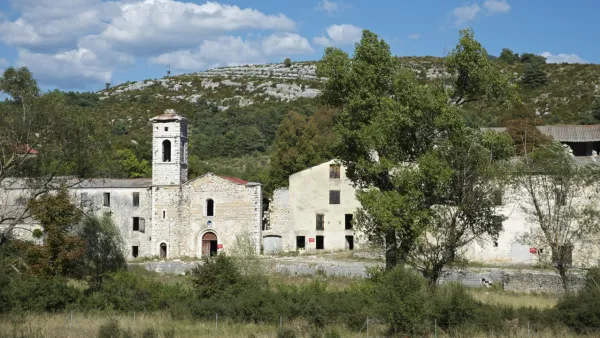This article from Discover takes a tour of Bodie, California, a gold-mining mountain ghost town, where the entire city is in a state of "arrested decay".
"Gaze into one of the ramshackle buildings in Bodie, California, and you might see dust-covered furniture, an old muffin pan, rusty tins, and broken kerosene lamps. Or you might see a fully stocked general store with original wooden boxes and shelves with tin cans. The old gold-mining town, once bustling with saloons, brothels, gambling halls, and even opium dens, is now a ghost town, probably the most famous one in America. But it is much more than that. According to cultural geographer Dydia DeLyser of Louisiana State University, ghost towns, like the ruins of Pompeii, help people understand the past. 'When people see Bodie,' DeLyser says, 'it's very powerful. They relate to the ideas the movies convey about the Old West, about the pioneering spirit of Americans, and read those into Bodie's landscape. By looking on the tarnished remains of the past, they feel they're experiencing that past.'"
"When the California State Parks Department took over Bodie in 1962, it initiated a program of 'arrested decay,' maintaining the dilapidated structures just as they appeared at the time of acquisition. According to Charley Spiller, a Bodie maintenance mechanic, the greatest enemies of preservation are wind, which can gust up to 100 miles an hour on nearby mountains, and snow, which averages 13 feet a year. 'When the roofs fail or the windows fail, then the snow gets in and sits and soaks into the floors, and then the floors deteriorate,' he says. Currently a team of three or four workers spend six months of each year shoring up walls, repairing roofs, and replacing smashed windows-a task that can eat up as much as half a million dollars for three years' work. Spiller and his team rebuild walls using pine similar to the native Jeffrey pine that settlers originally used. Without constant attention, most houses would disintegrate into splinters, he adds."
FULL STORY: The Most Famous Ghost Town in America

Analysis: Cybertruck Fatality Rate Far Exceeds That of Ford Pinto
The Tesla Cybertruck was recalled seven times last year.

National Parks Layoffs Will Cause Communities to Lose Billions
Thousands of essential park workers were laid off this week, just before the busy spring break season.

Retro-silient?: America’s First “Eco-burb,” The Woodlands Turns 50
A master-planned community north of Houston offers lessons on green infrastructure and resilient design, but falls short of its founder’s lofty affordability and walkability goals.

Test News Post 1
This is a summary

Analysis: Cybertruck Fatality Rate Far Exceeds That of Ford Pinto
The Tesla Cybertruck was recalled seven times last year.

Test News Headline 46
Test for the image on the front page.
Urban Design for Planners 1: Software Tools
This six-course series explores essential urban design concepts using open source software and equips planners with the tools they need to participate fully in the urban design process.
Planning for Universal Design
Learn the tools for implementing Universal Design in planning regulations.
EMC Planning Group, Inc.
Planetizen
Planetizen
Mpact (formerly Rail~Volution)
Great Falls Development Authority, Inc.
HUDs Office of Policy Development and Research
NYU Wagner Graduate School of Public Service



























